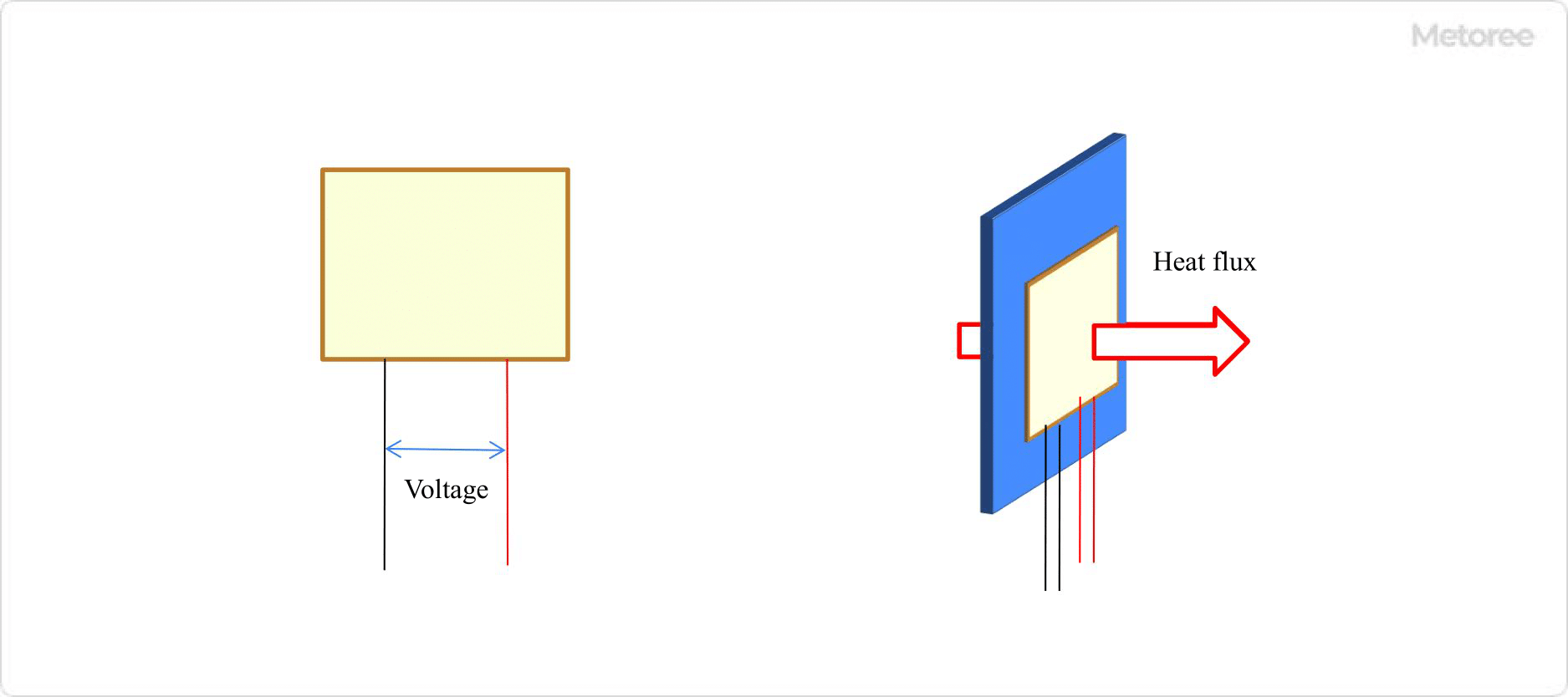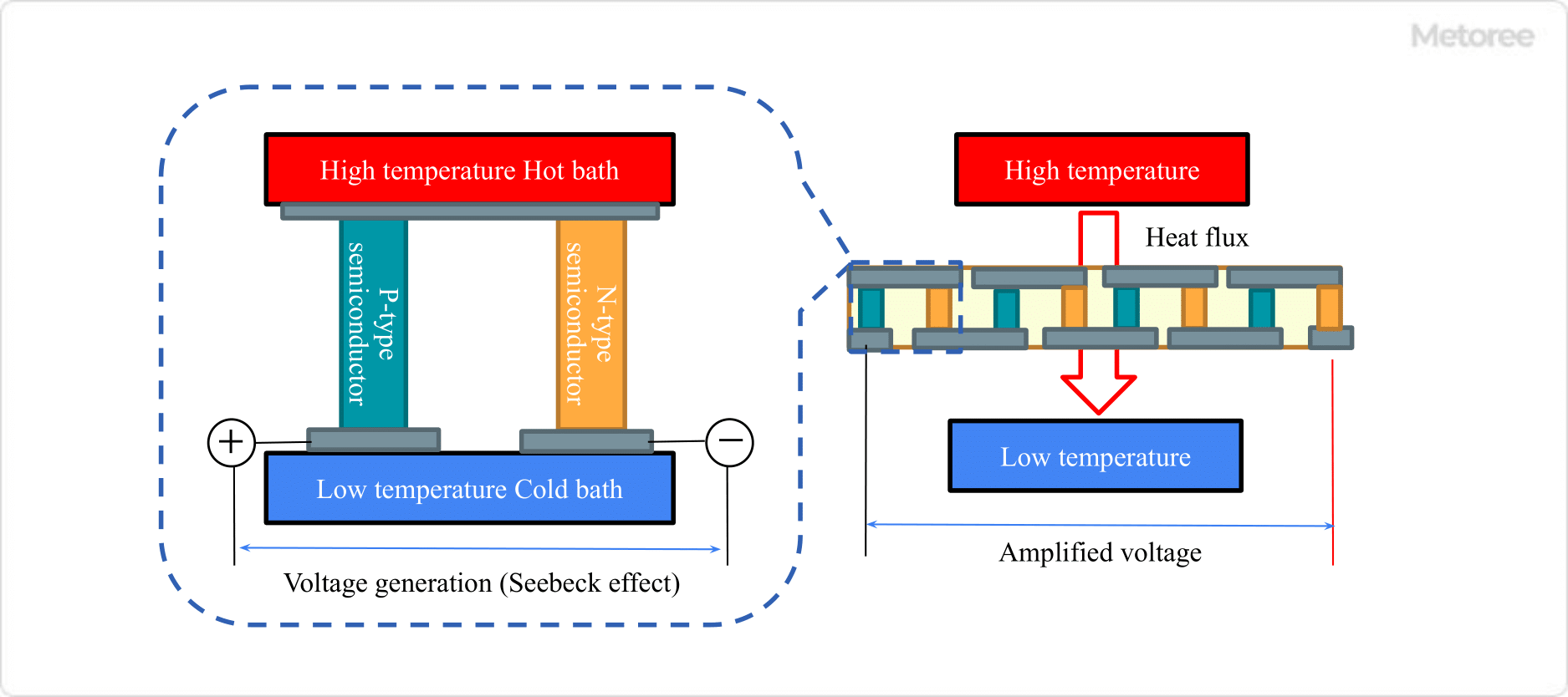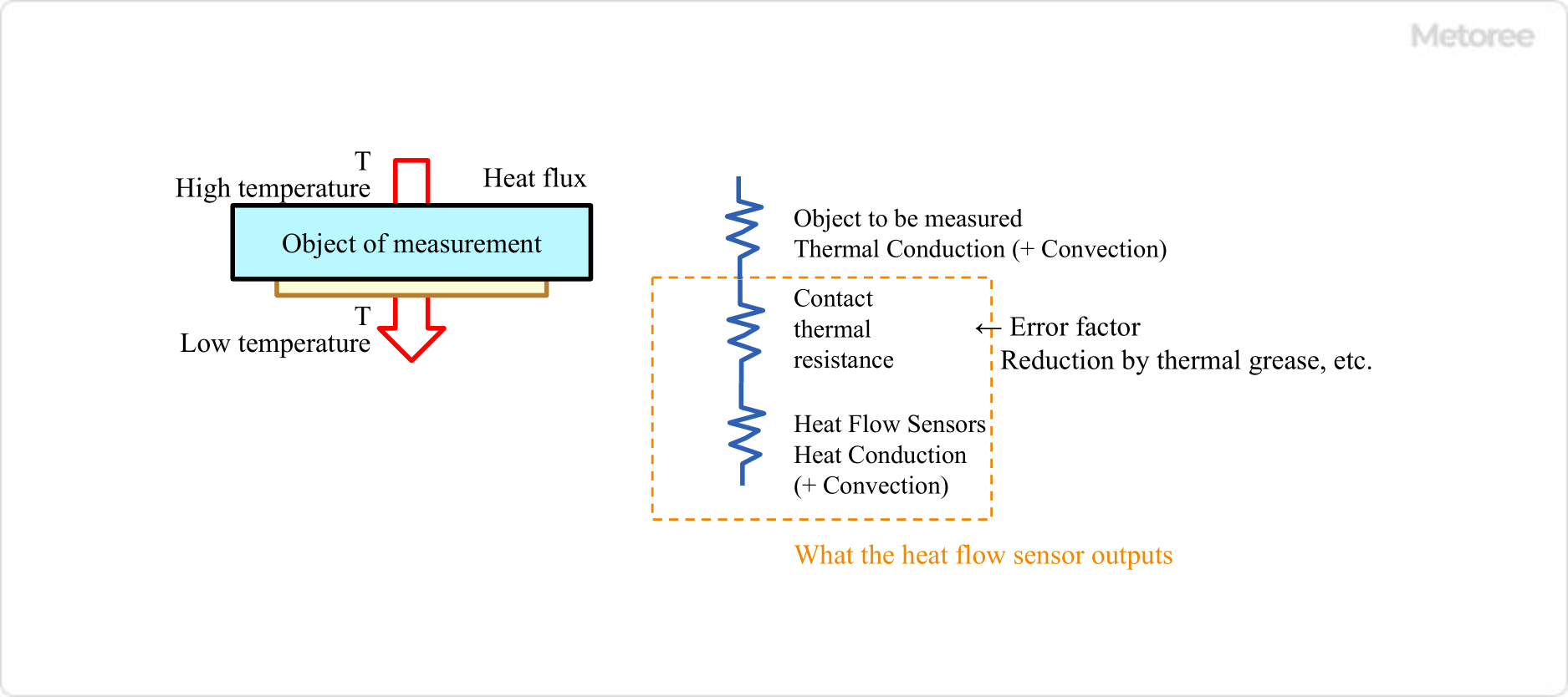What Is a Heat Flow Sensor?

Figure 1. What is a heat flow sensor?
A heat flux sensor is a device used to measure the amount of heat transfer, also known as heat flow. Heat generally moves from an area of higher temperature to a lower temperature. By measuring this heat flow, the amount of heat transfer can be quantified, and subsequent temperature changes can be estimated.
These sensors convert the heat passing through them into an electrical signal. They are available in flexible designs for curved surfaces and waterproof versions, suitable for various applications.
Applications of Heat Flux Sensors
Heat flux sensors are commonly used in evaluating the thermal insulation performance of housing equipment. With advances in miniaturization and flexibility, their usage has expanded beyond housing applications to include areas such as electronic components and automotive engineering, where they help monitor heat dissipation and loss.
For example, these sensors can be installed inside electronic components to measure the heat they generate. In automobiles, they are used for evaluating heat loss in engine compartments, seat heaters, and air conditioners. Additionally, heat flux sensors are instrumental in measuring the amount of heat flow in and out of materials during phase changes. One innovative application involves enclosing the material to be measured in a bag-shaped heat flux sensor. This setup allows for the measurement of heat flow in and out of the object and can be coupled with a cooling agent to monitor cooling capacity and duration.
Principle of Heat Flow Sensor

Figure 2. Principle of heat flow sensor
Heat flux sensors operate based on Fourier’s law and the Seebeck effect. Fourier’s law indicates that heat flow per unit area and time is proportional to the temperature gradient. The Seebeck effect generates a voltage when a temperature difference is applied across a substance.
The internal structure of these sensors typically includes N-type and P-type semiconductors, which exhibit the Seebeck effect, and thermocouple materials like copper and chromel-alumel connected in series. This configuration amplifies the small voltage generated by each component, enabling effective detection of heat flow.
Other Information on Heat Flow Sensors
How to Use Heat Flow Sensors

Figure 3. How to use a heat flow sensor
Proper selection and installation of heat flux sensors are crucial. It’s important to adhere to the specified temperature range limits to avoid issues like adhesive surface peeling. Sensors should be securely attached to the measurement object, using high-conductivity adhesives or silicon grease to minimize errors due to contact thermal resistance.
Before installation, it’s necessary to ensure that no air or foreign matter is trapped under the sensor and to check the direction of heat flow and the polarity of the sensor’s output by applying a temperature difference.